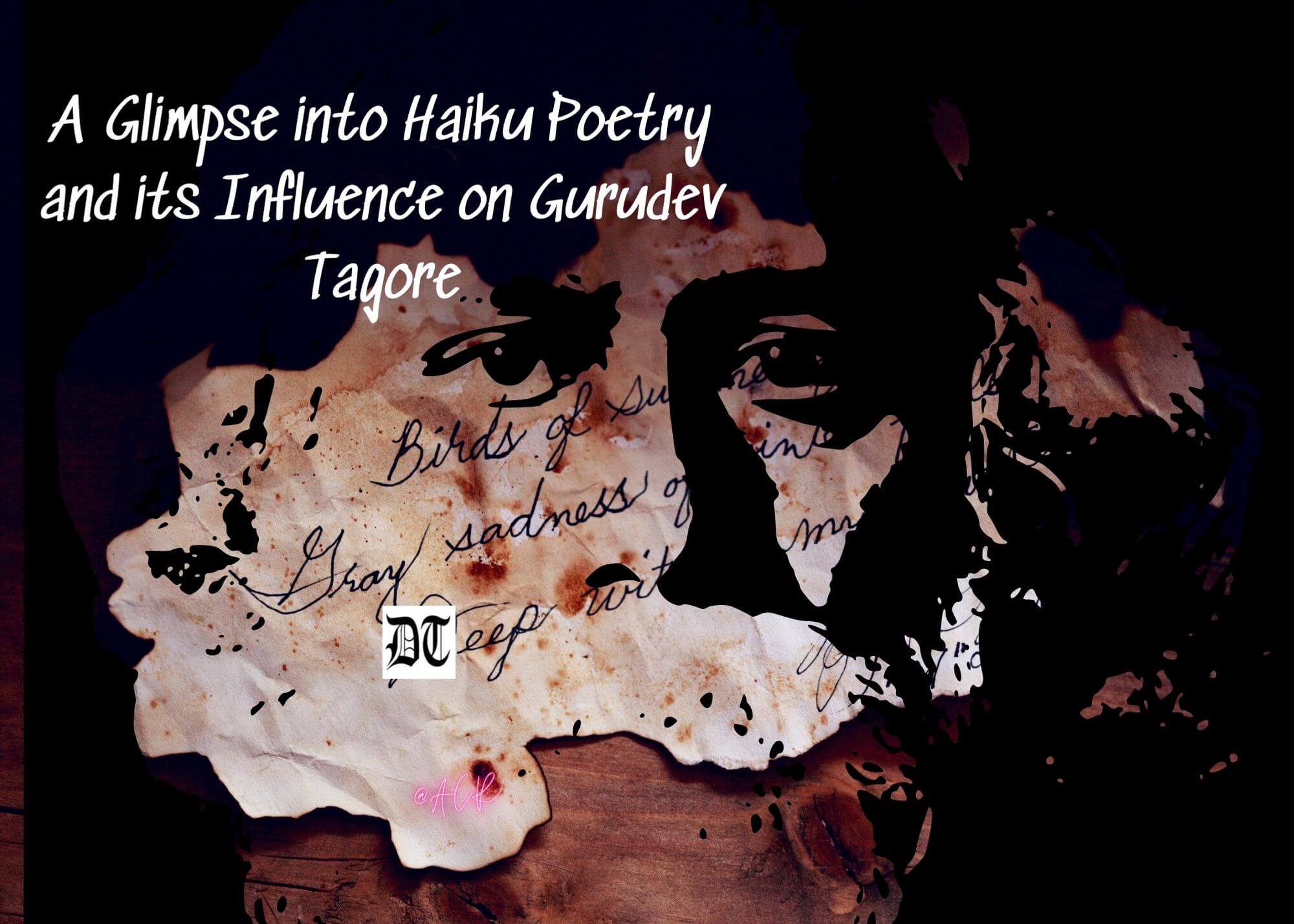
Mamta traces and critiques the influence of Haiku on Gurudev Tagore’s poems, exclusively in Different Truths.
Haiku is a traditional form of Japanese poetry, which began as a popular activity during the 9th century.
Haiku poems consist of three lines. The first line and the last line consist of five syllables and the middle line has seven syllables.
These poems are valued for their openness, depth, and lightness. The brevity of Haiku poems is an essential characteristic. A mood poem, a Haiku doesn’t use any metaphors or similes. In addition to its simplicity, one can be attracted by its sensory richness and its rich imagery.
The Haiku poets have celebrated Nature, capturing the beauty of its elements like the rain, hills, clouds, birds and the rainbow.
Famous Japanese masters of Haiku were Kobayashi Issa, Matsuo Basho, Yosa Buson, Masaoka Shiki and Natsume Soseki. These poets wandered the countryside, observing nature, spending years in perfecting their craft. The unhurried, uncomplicated world these poets were living in, their close communion with nature influenced their verse.
The beauty of rain captured by Matsuo Basho is so vivid yet simple in the expression:
In the twilight rain
These brilliant hued hibiscus
A lovely sunset.
A child- like glee is expressed by Yosa Buson while crossing a river in summer:
A summer river being crossed
How pleasing
With sandals in my hands!
Natsume Soseki brought out the stillness of the night very evocatively in these lines:
The lamp once out
Cool stars enter
The window frame.
In the early 20th century, Gurudev Rabindranath Tagore also experimented with Haiku. He was influenced by the precision, depth, power, and intensity of Japanese Haiku style of poetry.
Having received the Nobel Prize in 1914, Tagore was already identified as a world poet. Being a visionary, Tagore felt that the colonial education system was detrimental to Indian interests. Experimenting with Shantiniketan, an abode of unfettered, progressive learning, with a curriculum that was a unique blend of art, aesthetics, and culture amidst nature, he keenly sought to bring together heritage and modernity of India, interfacing between cultures for harmonious coexistence and cultural exchanges.
In a letter dated 18 February 1915 to Kimura Nikki, a Japanese student at Calcutta University who had also studied Bengali under Tagore, the poet-laureate wrote of his interest in Japanese literature: “I want to know Japan in the outward manifestation of its modern life and in the spirit of its traditional past. I also want to follow up on the traces of ancient India in your civilisation and have some idea of your literature if possible.”
Tagore had deep respect for Japanese culture that had been deeply influenced by Buddhism. The grand opportunity came in 1916 when he was sailing to America. En route Tagore paid a brief visit to Japan recording his experiences in Letters from Japan (serially published in the Bengali periodical Sabuj Patra in 1916, later collected and published as Japan Jatri). These letters contained significant sections on the Japanese short verse form of the Haiku.
Tagore notes the uniqueness of the Haiku calling it deeply visual, “They reveal the control over the human emotions. However, they are never short on aesthetic sensibility. Their sense of aesthetics is marked by deep appreciation yet there is a mastery over expression.” (Japan Jatri, p.75)
Neelanjan Banerjee, a poet, and curator has published the collection of Tagore’s short poems called Knockings at My Heart. Each short poem, written in calligraphic type, occupies a page of the book:
The mist tries
To capture the morning
In a foolish persistence.
Or
The pomegranate bud hidden behind her veil
Will burst into passionate flower
When I am away.
Amrit Sen, in his cogent article in Muse India (2009), is of the view that for Tagore, the short verse form of the Haiku was imbued with a much larger significance. It was a cultural marker that helped Tagore to understand the rich heritage of Japanese culture and aesthetics. His willingness to read, translate and recreate the Haiku also revealed Tagore’s vision of an exchange of cultures and works of literature that could then lead to a truly global community.
The contribution of Haiku in impacting a polymath like Tagore expresses so much about this compact Japanese literary form which suggests more in the fewest possible words. The discipline of Haiku is indeed remarkable, an effective antidote to verbal excess, promoting brevity and depth in writing.
Picture design Anumita Roy, Different Truths
#Haiku #HaikurAndRabindranath #InfluenceOfHaiku #RabindranathTagore #GurudevAndHaiku #DifferentTruths






 By
By

 By
By
 By
By
Great article, thanks!